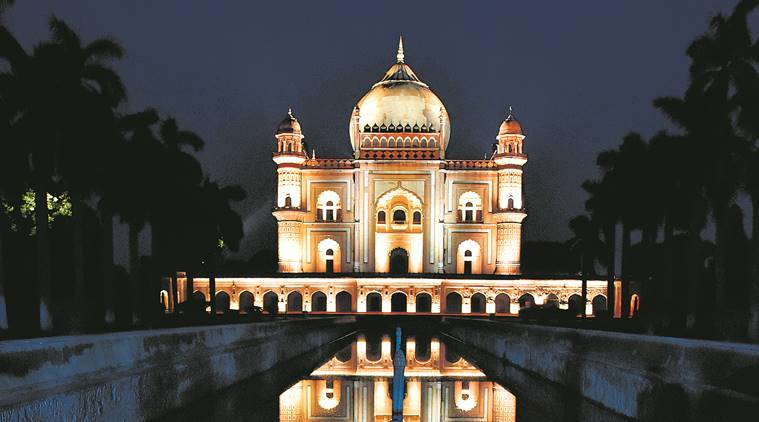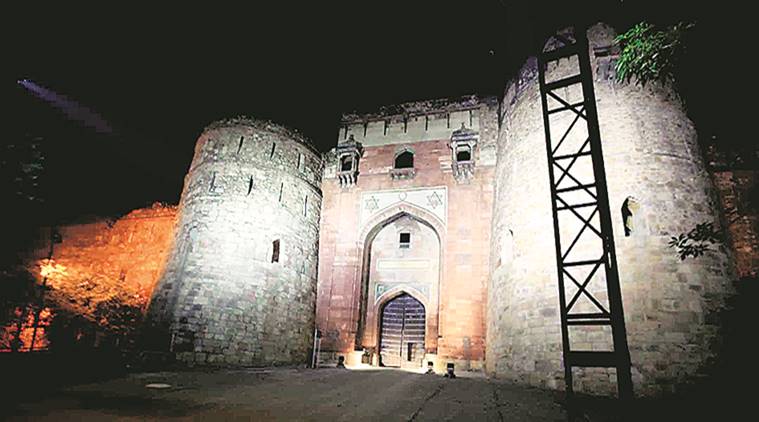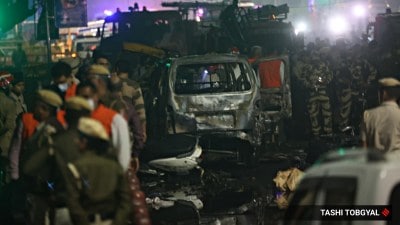 Safdarjung Tomb (Express photo by Amit Mehra)
Safdarjung Tomb (Express photo by Amit Mehra)
On Saturday evening, Qutub Minar, the famed 13th century minaret at Delhi’s Mehrauli, will join a group of heritage structures in the Capital that have been illuminated to encourage night-time tourism. The Archaeological Survey of India (ASI) and National Buildings Construction Company (NBCC) began the work of illuminating the minaret in March. Warm lights will highlight the architectural features on the monument’s facade. Apart from the minaret, all the pathways and the smaller structures around the Qutub Minar have also been lit. As many as 358 lights will be on from 7 PM to 11 PM everyday. Qutub Minar will be open to visitors till 10 PM. In the past few months a slew of monuments in the Capital have been lit up. We take a look at the other spruced up monuments in the Capital.
Safdarjung Tomb

Only last month, ASI had illuminated Safdarjung Tomb with simple yellow and static lighting to accentuate the monument’s silhouette. Here, the duration of the illumination is from 7:30 pm to 11 pm, and warm lights have been used since they won’t adversely affect the monument’s facade. In 2010, during the Commonwealth Games, the tomb was illuminated by the ITDC (India Tourism Development Corporation) at a cost of Rs three crore. But this was discontinued soon after, owing to lack of manpower with ASI to maintain late hours. However, this time the agency is more prepared, making a concerted effort across various popular monuments in the Capital.
Red Fort
In August last year, the historic Red Fort came alive in the evenings as it saw the first ever architectural illumination of its front fortification wall and the two important gateways — Lahori Gate and Delhi Gate. The 17th-century Mughal era monument has been lit up with architectural lighting also known as ‘element illumination’ to enhance its architectural beauty after sunset. The lighting has been done on the 1.3 km length of the parapets using around 2,500 lights, and casts programmed light on its domes, ramparts, minarets, arches and balconies from different directions to highlight their architectural details. It uses simple yellow and static lighting, and the duration is 7:30 pm to 11 pm.
Story continues below this ad
 Purana Qila
Purana Qila
Purana Qila
In the recent past, the central government body also completed the lighting of the Purana Qila. The rejuvenated lake and illumination of the Qila was inaugurated in October last year. Purana Qila is one of the major tourist attractions in Delhi and a large number of visitors throng the historical vestiges, which date back more than 3,000 years. The major attractions inside the fort include the Qila-i-Kuhna mosque, Sher Mandal, a stepwell and remains of the ramparts.
Humayun’s Tomb
The grand white marble dome of Humayun’s Tomb shines bright at night throughout the year with the monument’s restorer — the Aga Khan Trust for Culture — installing around 800 energy efficient lamps at the 16th-century mausoleum. Beams of LED lights, directed from the bottom towards the top, mimic the moonlight effect. The dome is lit up for five hours after sunset every day since September 2018. LED bulbs have replaced high energy consuming halogen light fixtures, which were installed in 1999. The new lighting has been designed in a way to prevent any shadow on its surface.
As part of the night-tourism initiative, the timings for public entry at Red Fort, Safdarjung Tomb and Humayun’s Tomb have also been extended from 6 pm earlier to 9 pm now. An official from ASI said that they were now expecting an increase in the footfall. In the coming years, the Ministry of Culture proposes to move beyond Delhi and take up the illumination of all its 100 Adarsh Smaraks all over India including Hampi, Sun Temple, Mahabalipuram and some forts in Goa and Rajasthan.

 Safdarjung Tomb (Express photo by Amit Mehra)
Safdarjung Tomb (Express photo by Amit Mehra)
 Purana Qila
Purana Qila

























